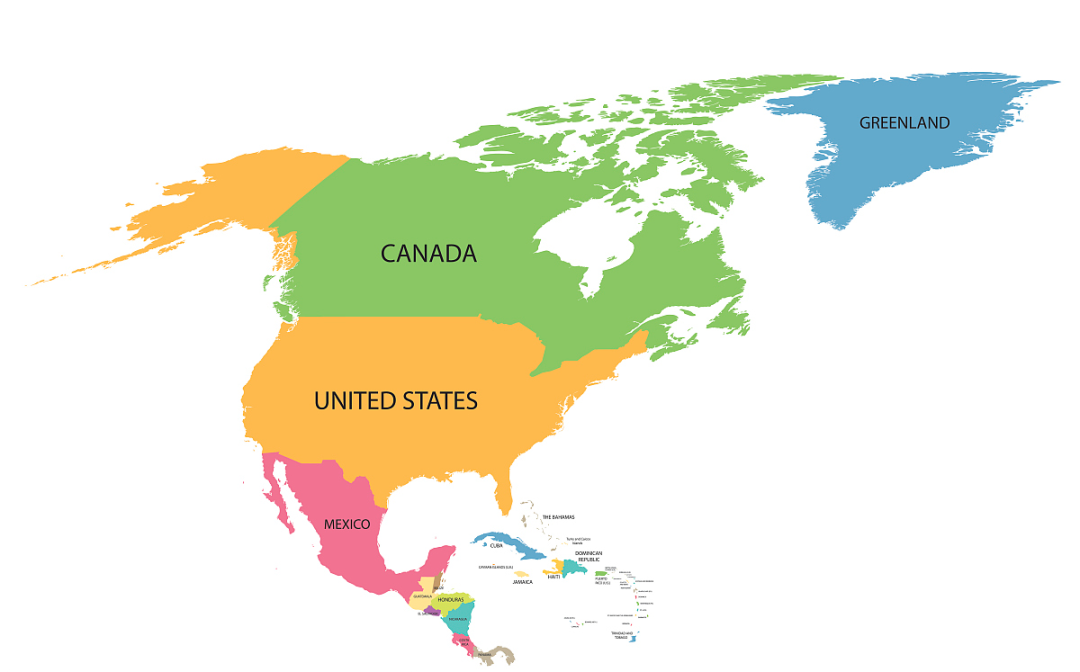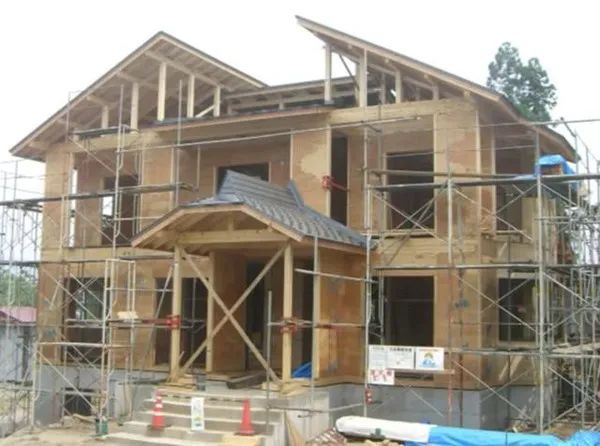Emerging Trends in the North American Building Materials Market! Favorable Analysis of China’s Foreign Trade in the North American Building Materials Market

The North American building materials market holds an important position globally. In 2025, the global building materials market is expected to reach $1,421 billion, with the North American market accounting for a 28.32% share. From the market revenue data, the North American building materials industry is projected to grow from $351.006 billion in 2021 to $402.427 billion in 2025. Furthermore, it is expected that by 2033, the industry will grow at a compound annual growth rate (CAGR) of 3.827%, reaching $543.481 billion.
In terms of geographic distribution, the United States dominates the North American building materials market, with its market share expected to reach as high as 78.76% in 2025. Canada accounts for 13.64%, and Mexico accounts for 7.60%. As the largest single building materials market in the world, the size and growth trend of the United States have a profound impact on the building materials market in North America and even globally.
From a growth trend perspective, the North American building materials market is expected to maintain steady growth in the coming period. This is primarily driven by the ongoing demand for infrastructure construction within the region, the stable development of the real estate market, and consumers' continuous investment in home decoration and renovation. For example, with the increase in the median age of houses in the United States, a large number of homes built before 1980 face upgrading, improvement, and renovation needs, which directly propels the development of the building materials market.

Infrastructure update
In North America, especially the United States, some infrastructure is aging and urgently needs large-scale maintenance and updates. Renovation projects for infrastructure such as roads, bridges, and public buildings have created a continuous and substantial demand for building materials like concrete, steel, and asphalt. Government investment in infrastructure construction is steadily increasing. For example, the Biden administration has introduced a large-scale infrastructure construction plan aimed at improving the United States' transportation, energy, and other infrastructures, which undoubtedly injects strong development momentum into the building materials market.
02
Urbanization process

03
Second-hand housing transactions and renovation
In the U.S. real estate market, second-hand home transactions dominate, with new home sales accounting for no more than 20% of existing home sales overall since 1999, and second-hand home transactions accounting for more than 80%. Owners of second-hand homes often undertake partial renovations, replace home furnishings, and engage in other improvement activities to enhance living comfort and property value. As the median age of U.S. homes increases, with nearly half built before 1980, the demand for renovating these second-hand homes is particularly strong, thereby stimulating the demand for various home improvement materials.
04
New residential buildings

DIY and Professional Repair
In the United States, the DIY (do-it-yourself) approach is quite common for minor home repairs and renovations. However, as homes age, the repair and renovation needs become more complex and professional, leading to a growing trend of hiring professionals for repairs and renovations. By 2021, professional contractors accounted for 61% of the market. This shift not only drives demand for various high-quality building materials but also prompts suppliers to focus more on the professionalism and applicability of their products to meet the needs of the professional repair and renovation market.
Analysis of the Benefits for Chinese Foreign Trade in the North American Building Materials Market

Cost Advantage
Price Competitiveness: According to the 2023 trade data from the U.S. Census Bureau, using "unit value" (import dollar value divided by quantity) as a proxy indicator for price, China is the cheapest supplier for 29% of products in the U.S., far surpassing other countries. In the building materials sector, China, with its mature industrial system, large-scale production capacity, and relatively low labor costs, can offer various building materials products to the North American market at more competitive prices. For example, Chinese-produced tiles, sanitary products, hardware accessories, etc., have a clear price advantage compared to North American domestic products and products from other import source countries. This makes Chinese building materials products more appealing to price-sensitive consumers in the North American market.
The advantages of supply chain integration: China has a comprehensive and highly integrated building materials supply chain, with close coordination across all stages from raw material procurement, production and processing, to product transportation, effectively reducing production costs. Numerous building materials manufacturers are concentrated in specific regions, forming an industrial cluster effect that further enhances production efficiency and reduces logistics costs. This supply chain integration advantage enables Chinese building materials companies to offer products to the North American market at relatively low prices while ensuring product quality, thereby enhancing the price competitiveness of Chinese building materials in the North American market.
(2) A wide variety of products
Comprehensive Category Coverage: China's building materials industry is highly developed and can produce almost all categories of building materials. This ranges from basic structural materials such as steel, cement, and wood, to various decoration and finishing materials like ceramics, glass, and coatings, as well as hardware, kitchen, and bathroom products. The North American market has a diverse demand for building materials, whether it be large-scale infrastructure projects or small home renovation projects, the corresponding products can be found in China. This advantage of comprehensive category coverage allows North American buyers to achieve one-stop procurement in China, significantly reducing procurement costs and time.
Customization Capability: With the increasing personalized demands of consumers, Chinese building material companies are continuously enhancing their product customization capabilities. For the unique needs of different customers in the North American market, such as distinctive design styles, size specifications, and functional requirements, Chinese companies can respond quickly and provide customized building material products. In the field of architectural doors and windows, Chinese companies can produce customized products that meet North American customers’ personalized requirements for thermal insulation, soundproofing, appearance design, and other aspects, thereby satisfying the diverse consumer demands of the North American market.
(iii) Supply Chain Resilience
Risk Management Capability: Despite being affected by various factors such as trade frictions and the pandemic in recent years, Chinese building materials companies have demonstrated strong supply chain resilience. During the pandemic, China was among the first to control the outbreak and resume production, becoming a crucial supplier of building materials globally and ensuring the supply to the North American market. Chinese companies effectively addressed various risks and challenges by optimizing supply chain management, strengthening cooperation with suppliers, and expanding raw material supply channels, ensuring that products could be delivered to the North American market on time and in the required quantities.
Trade Channel Diversification: To reduce trade risks, Chinese building materials companies are actively expanding their trade channels. In addition to traditional trading methods, they are also increasing their investment in emerging fields such as cross-border e-commerce. By establishing online sales platforms and collaborating with internationally renowned e-commerce platforms, Chinese building materials products can more directly reach North American consumers and buyers, reducing intermediaries and improving trade efficiency. Meanwhile, Chinese companies are also strengthening cooperation with local distributors and retailers in North America, further consolidating and expanding their market share through localized operations.
Recommended by International Builders' Show (IBS)

The NAHB International Builders' Show (IBS) is the largest and most influential residential construction industry event in North America. It is held annually and attracts construction industry professionals, building material suppliers, manufacturers, and others from around the world. Registration for the 2026 IBS will open on September 2, 2025. This exhibition is not only a platform for showcasing the latest building materials and technologies but also an important venue for industry communication and building partnerships.
The exhibition brings together over 1,800 exhibitors showcasing a variety of building materials, brands, and companies. Each year, hundreds of new products and services make their debut at IBS, covering multiple fields such as building materials, home decoration, and smart building technology. Exhibiting companies can showcase their latest R&D products and technologies here, such as high-performance concrete, lightweight composite materials, and smart home control systems, providing innovative solutions for the industry. For North American building material buyers and professionals, IBS is an excellent opportunity to learn about the latest product trends in the industry and to find quality suppliers.
For Chinese building materials companies, participating in the IBS exhibition is an important way to enter the North American market and expand their business. By showcasing products and corporate image at the exhibition, they can attract the attention of potential customers such as local North American buyers, distributors, and builders, and establish direct business cooperation relationships. Additionally, various business matchmaking activities are held during the exhibition to help Chinese companies accurately connect with North American companies, promoting cooperation in product trade, technical collaboration, investment, and mergers and acquisitions, thus assisting Chinese building materials companies in better integrating into the North American market.

【Copyright and Disclaimer】The above information is collected and organized by PlastMatch. The copyright belongs to the original author. This article is reprinted for the purpose of providing more information, and it does not imply that PlastMatch endorses the views expressed in the article or guarantees its accuracy. If there are any errors in the source attribution or if your legitimate rights have been infringed, please contact us, and we will promptly correct or remove the content. If other media, websites, or individuals use the aforementioned content, they must clearly indicate the original source and origin of the work and assume legal responsibility on their own.
Most Popular
-

List Released! Mexico Announces 50% Tariff On 1,371 China Product Categories
-

EU Changes ELV Regulation Again: Recycled Plastic Content Dispute and Exclusion of Bio-Based Plastics
-

[PET Weekly Outlook] Polyester Bottle Chips Expected to Oscillate and Warm Up with Costs Today
-

Case Study | Clariant AddWorks™ Additives Solve Plastic Yellowing Problem
-

EVA Morning Prices on September 12: Most of the Market Holds Steady, Highest Rise of 50 Yuan






